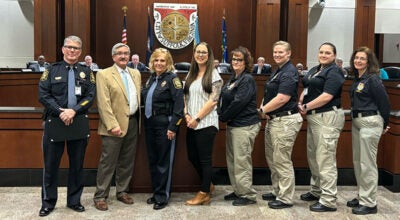Planners: Sign ordinance out of compliance
Published 8:34 pm Thursday, September 17, 2020
|
Getting your Trinity Audio player ready...
|
City planners told the Planning Commission that Suffolk’s sign ordinance is out of compliance and needs to be updated.
“This is a result of recognizing that our sign ordinances as currently constructed are in violation of a U.S. Supreme Court decision involving signs,” said David Hainley, director of planning and community development.
At the commission’s Sept. 15 meeting, City Planner Kevin Wyne said the update has been about three years in the making and the current ordinance has problems in its current form due to the 2015 court decision, which said that placing content-based restrictions not narrowly tied to the furthering of a compelling local interest was unconstitutional.
Wyne said the decision altered the way localities operated because most sign ordinances to that point had been content-based.
However, Wyne said planners wanted “to stay true to our current regulations as much as possible,” and he believes they have done so.
“Once you start digging into the complexities of a sign ordinance, you realize that you troubleshoot one issue, there are ripple effects,” Wyne said.
Currently, Article 7 of the unified development ordinance regulates signage and defines many sign types by their anticipated content, such as political signs, real estate signs and temporary signs. That, however, contradicts the court decision, according to Wyne.
The changes, he said, would make it more user friendly for staff and the public.
“We really troubleshooted our current ordinance and how to untangle it from content,” Wyne said. “The proposed changes move towards regulating signage by its type and its location, so we’ve moved from a content-based standard to a more locational type.”
For instance, Wyne said the preview boards — defined in the current unified development ordinance as “a sign or a portion of a sign designed as an outdoor means to provide onsite information for drive-in service and not additional advertisements which contains only items of information that are not legible from any public right of way” — would be called drive through signs in the new ordinance. Wyne said this would refer to the sign by its location and not by its content.
The court found that many regulations on signs not tied to content can be used to protect public health, safety and interest, including size, location, movability and lighting.
“We can still have the ability to regulate those from a health and safety standpoint,” Wyne said.
Regarding temporary signs, Wyne said the three pages devoted to them in the draft of the new ordinance took the planning staff the longest to troubleshoot.
Signs that were categorized as political or yard/other would be referred to as yard signs, rental/real estate signs would be referred to as signs located on properties for sale or rent, and construction/future site signs would be referred to as signs located on development and construction sites.
Size regulations for signage, setbacks and height regulations would mostly stay the same unless correcting regulations planning staff identified to be too restrictive.
Window signs, for instance, would mostly be allowed to be larger, and electronic message board signs could change every minute, rather than every hour.
No permit would be required for temporary signs, but they will still not be allowed in the public right-of-way. Residential uses would be allowed no more than two yard signs at any time, not to exceed a combined 12 square feet. There would also be a 90-day allowance for temporary signs in residential zoning districts.
Hainley said the plan is for the commission to hold a public hearing on the proposed changes to the sign ordinance at its October meeting.
“We tried not to change too much from our current ordinance,” Wyne said. “Primarily, permanent signage is regulated in the same fashion. It looks a little different. It’s fresher (and) it’s going to be more user-friendly. Temporary signage, it wasn’t that easy for various reasons, but we still tried to stay true to the current intent of our sign ordinance.”





